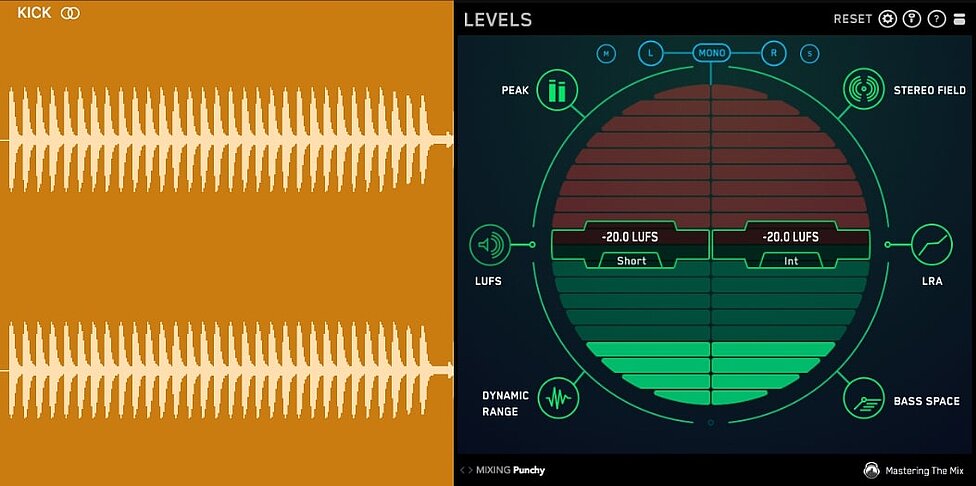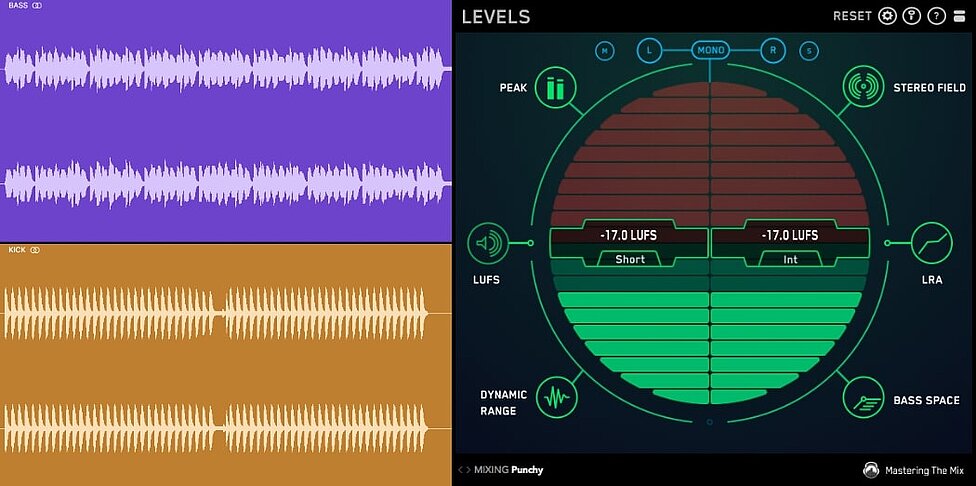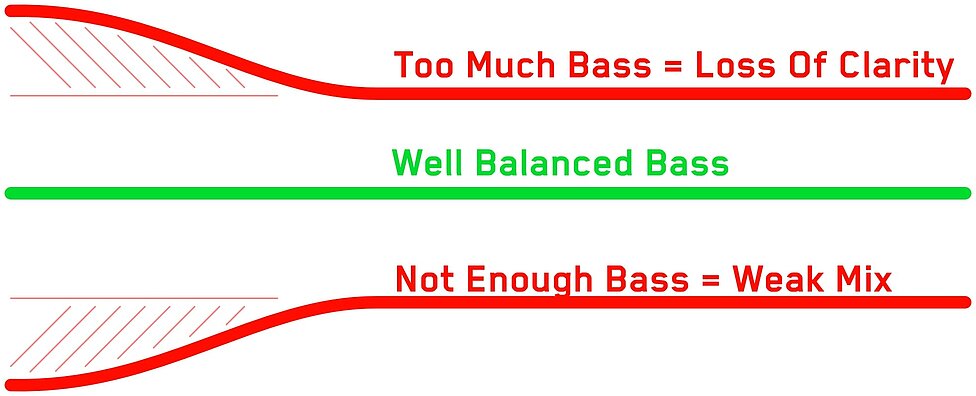Guest Blog Article: 3 Step Process To Get A Great Bass Balance In Your Mix
In this guest blog article by Mastering The Mix owner and operator Tom Frampton, you’ll learn how to get a great bass balance in your mix without expensive studio equipment.
OCTOBER 23RD, 2019
One of the biggest frustrations that music producers have is getting the kick and low-end of the bass sitting perfectly in the mix.
It’s a struggle as most people are limited by their smaller home-studio monitors. To get a great representation of bass, you need large full-range monitors. Not only are they expensive, but they also require significant acoustic treatment to be effective.
In this blog post, I’m going to explain how you can craft a great low-end balance in your own studio without the need for expensive monitors.
1. Balancing the Kick and the Bass
The first step is making sure that your kick and bass have a great balance relative to each other. Start by soloing the kick, and viewing its perceived loudness using a LUFS meter (Loudness Units Full Scale). In the example below LEVELS is showing that the kick has a perceived loudness of -20 LUFS.

The next step is to solo the kick and bass together and adjust the bass until the LUFS reading is 3 LU (Loudness Units) louder… So in this circumstance, you would be shooting for -17 LUFS.

Why does this work? The intensity of sound doubles with every incremental increase of 3LU. You could start with the kick at -10LUFS in LEVELS and aim to get the meter touching -7LUFS when both the kick and bass are combined to achieve the same result. This technique will work as long as the LUFS meter shows a 3LU increase after the bass has been soloed alongside the kick.
This is a great starting point. From here you might want the kick or bass to be slightly dominant in the mix so you might edge one slightly louder than the other.
2. Balancing in the Context of the Whole Mix
Now that the kick and the bass sound great relative to each other, it’s time to get them sitting well in the context of the whole mix.
Try to have your monitor volume at around 73-76dB for the optimum level for setting the perfect low-end. We hear frequencies differently at various volume levels. We hear less bass when it’s quieter, and more bass when it’s louder. There are free smartphone apps that give you accurate enough readings to get the listening level right.

Select the kick and bass in your mixer and adjust their balance whilst listening to the whole mix.

Use one or more reference tracks that you love the sound of to help you make an informed decision. Be sure to level match the reference tracks to your mix to make sure you get a fair comparison.
At this point, your low-end should be starting to feel solid and well balanced. You won’t have too much bass giving your mix a bloated feeling and you won’t have too little bass making your song sound weak.

3. Finishing Touches
Your mix bus, or stereo output channel will allow you to make broad adjustments to the overall tonal balance of your song. This final step will help you ensure the low-end of your music has a comparable balance to your favorite mixes.
Mastering The Mix plugin BASSROOM is a final mix and mastering EQ that helps beginners and pros nail their low-end in seconds. It does this by delivering exceptional sound quality and suggesting genre-specific EQ adjustments a great audio engineer in a world-class studio would make.
Mastering The Mix analyzed the best mixes in various genres to give you EQ target presets you can trust. You can also create your own targets with BASSROOM’s inbuilt analysis tools. From this starting point, you can tweak your low-end to perfection using the immersive 3D room interface.
The first two minutes of the video below explains how to use BASSROOM in your own mixes to fine-tune the perfect amount of bass.
Conclusion
Mixing bass is hard, but essential if you want your music to sound pro and resonate with your audience. Following the steps laid out in this blog will help you take out a lot of the guess-work involved in mixing bass. Once you’ve gone through the process once or twice you’ll notice a consistency in the tonal balance of your mixes and they’ll sound better when played back to back with successful releases.
If you want to dive deeper into the subject you can check out this post on getting a great tonal balance across the entire frequency spectrum, or this in-depth guide to getting a great sound from your kick and bass.

Author Bio
London based Tom Frampton is the owner and operator of Mastering The Mix. His plugins are designed to help producers get their music sounding better than ever by solving the hardest problems they face when mixing and mastering music. You can grab the free trials here.
Stay up to date
Sign up and we’ll send you an e-mail with product news and helpful stuff every now and then. You may unsubscribe at any time.
Defy Limits
We develop software solutions that enable people to create, consume and interact with music.

